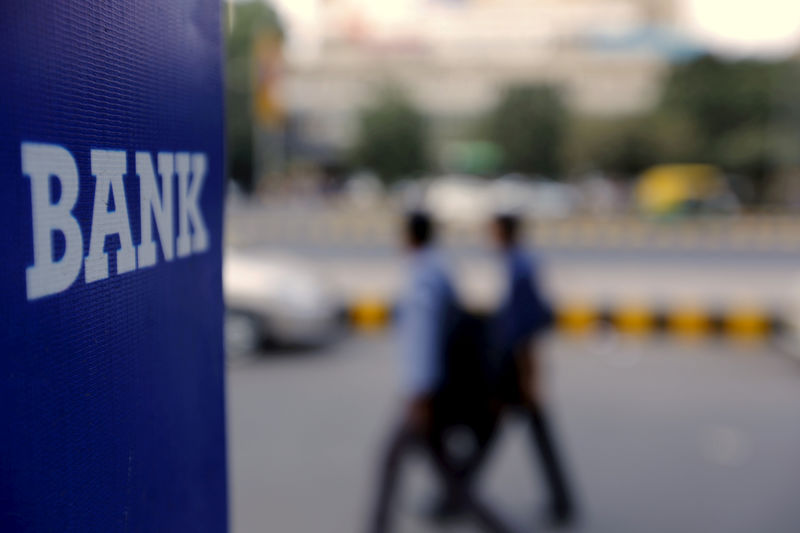By Promit Mukherjee and Suvashree Choudhury
MUMBAI (Reuters) - When India introduced new bankruptcy resolution rules in 2016, government officials and investors said they expected debt-burdened state-owned banks to clear up some of their bad loans and create a dynamic market in restructured debt.
Ultimately, they said, they hoped the reform would remove an impediment to higher economic growth.
Almost three years later, those hopes have been badly dented. Litigation has tied down some big restructuring deals and bankers are starting to sell bad debts at fire sale prices rather than wait for the system to work better.
That is bad news for Prime Minister Narendra Modi, who is keen to get banks lending more to stimulate the economy and create more jobs ahead of an election due by May this year.
"The delay (in resolution) definitely affects the diligence and planning effort of financial investors," said Vijay Padmanabhan, director of KKR & Co. Inc., one of world's biggest private equity firms which has said it is keen on investing in India's distressed assets.
Alhough Padmanabhan said the current bankruptcy process was faster than before, he cautioned that "litigations have to be contained and timelines have to be maintained to generate serious interest amongst financial investors."
The Insolvency and Bankruptcy Code, introduced in May 2016, allows even small creditors to file insolvency petitions against a company that had defaulted on debt. Once the petition is accepted by a court, a resolution plan has to be decided within 270 days, failing which the company will be liquidated.
The idea was the law would provide an incentive to owners to negotiate over distressed debt, rather than face an accelerated bankruptcy process over which they would have very little control.
It would also pull in foreign investors seeking distressed investments and potentially high returns, said Siby Antony, chairman of distressed assets resolution business at Edelweiss, which specialises in turning around debt-ridden companies.
Then, the owners of one of India's biggest defaulters - Essar Steel, which owes 508 billion rupees ($7.11 billion/£5.38 billion) mostly to state banks - challenged the bankruptcy court's decision to sell the steel producer to Arcelor Mittal, taking it away from its previous owners, the brothers Shashi and Ravi Ruia.
The nine months set for the process has now stretched to more than one and a half years, leaving creditors still not knowing how much of their money will be returned.
RESTRICTIONS ON LITIGATION
The debt of Bhushan Power and Steel Ltd, Jyoti Structures (NS:JYTS) and scores of other companies are also stuck in similar litigation.
While the bankruptcy code was a step forward, it would have been more effective if it had included restrictions on the scope for litigation, bankers and investors said.
India has 14.5 trillion rupees ($204.16 billion) of distressed assets, of which only around 730 billion rupees ($10.26 billion), or about 5 percent, have been resolved. However, only about half of this sum has so far been recouped by the banks due to legal challenges that have stalled payments.
(graphic: http://tmsnrt.rs/1Sf4ij7)
"It would have been helpful if all the nuances of the law and possible outcomes were thought through," said Alok Verma, executive director at Kotak Investment Banking, part of the Kotak Mahindra Group which works with clients looking at distressed assets in India.
So far out of 1,198 cases admitted under insolvency process, only 52 have seen approval of resolution plans, and even among those, repayments are still to be made to lenders.
"Most foreign investors are sitting on the fence waiting for the resolution process to stabilise," said Antony of Edelweiss.
But Anthony does hold some hope that the system will speed up once the Essar Steel issue is resolved as that would set a precedent. "Once the big accounts are cleared the pipeline will move fast," he predicted.
In the meantime, bankers are now looking to sell some of their bad assets at a steep discount to free up capital.
India's largest lender State Bank of India is looking to put its 150.4 billion rupees ($2.1 billion) exposure to Essar Steel on the block at 62 cents to the dollar. Other lenders to the company are weighing similar options as prolonged litigation might cost them more in terms of provisions for losses and loss in interest income than any final recovery they might make, one banker to Essar said.
For capital-starved Indian banks, taking such haircuts is costly. But for the economy, it is an even greater cost given banks fund more than 60 percent of India's credit requirements.
"State-owned banks' core capital ratios are already very weak and that is the main factor constraining their capacity to lend," said Saswata Guha, director and head of financial institutions at Fitch Ratings. "It eventually poses a risk to economic growth."
